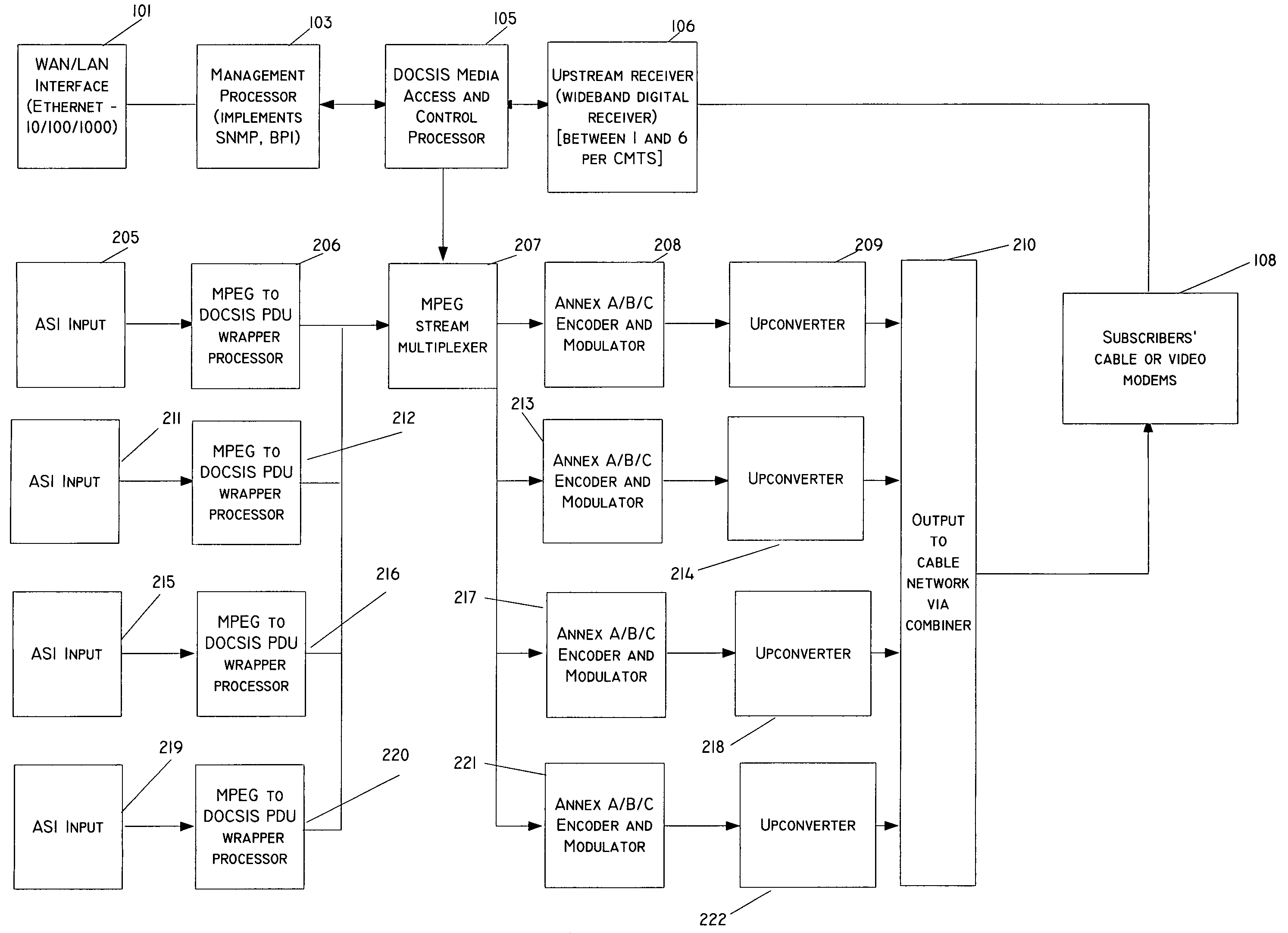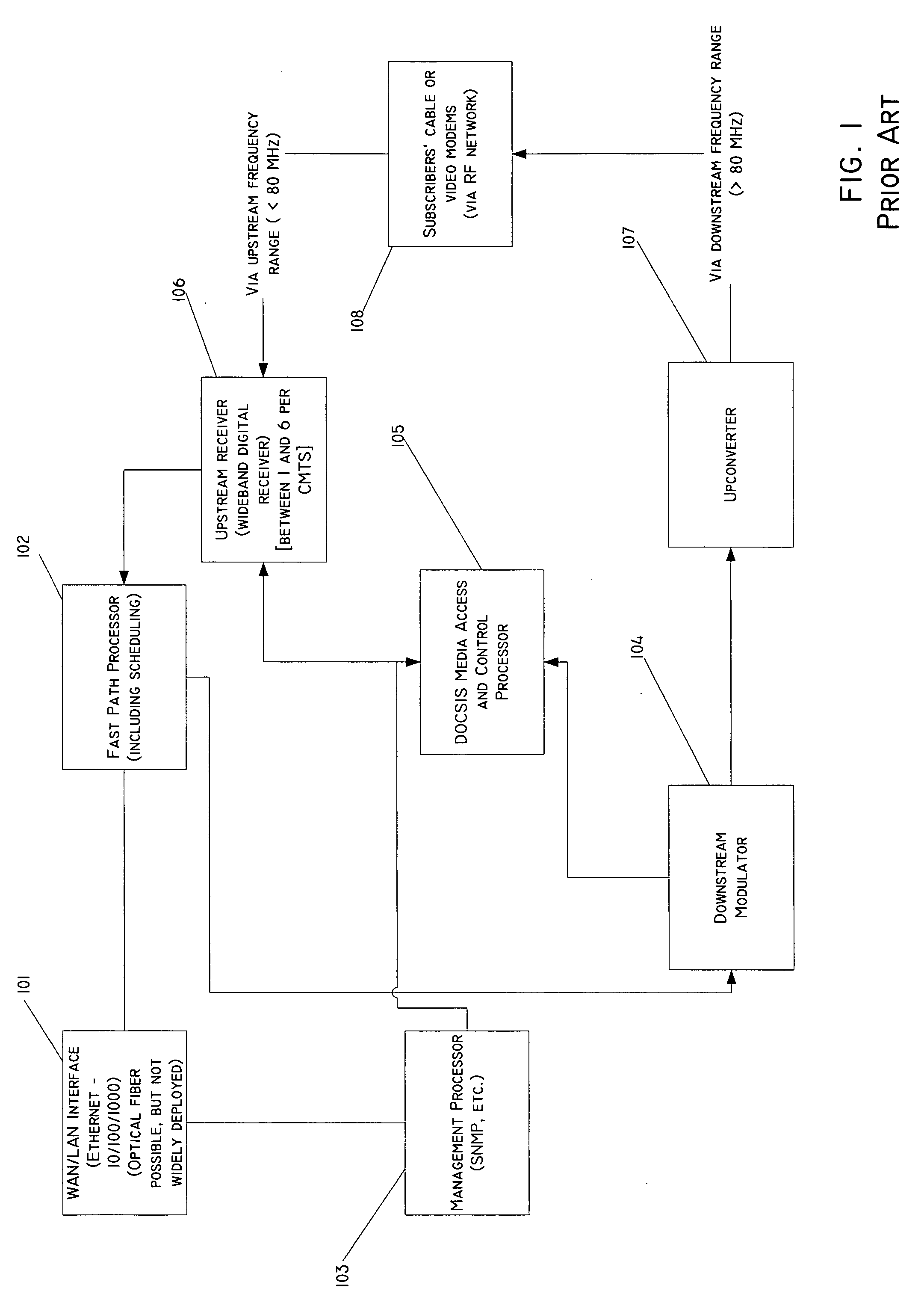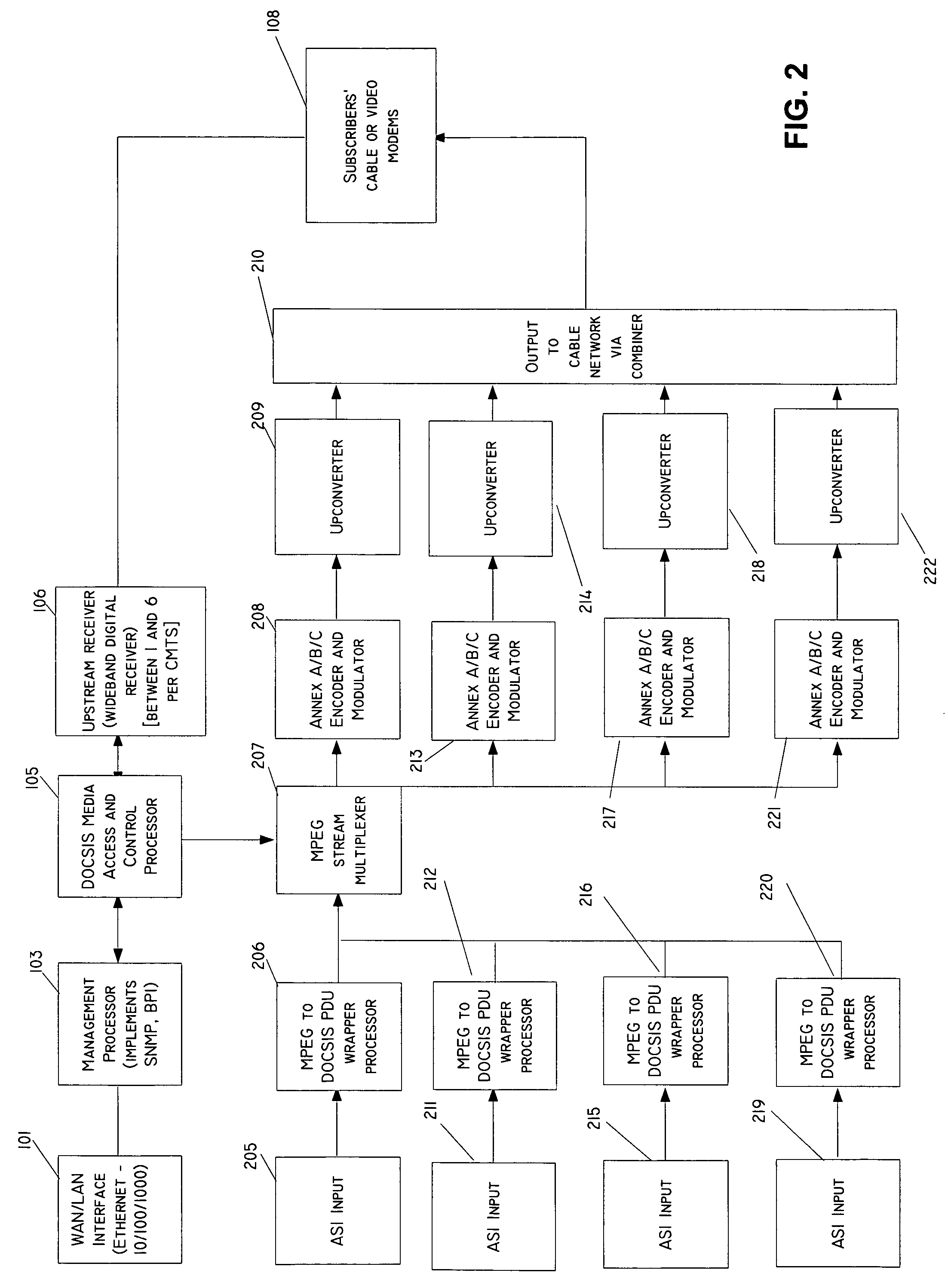Video modem termination system and method
a termination system and video technology, applied in the field of video modem termination system and method, can solve the problems of infeasibility of video distribution, high cost of cmts units, and the requirement of separate expensive cable modem termination systems for each 6 mhz downstream channel
- Summary
- Abstract
- Description
- Claims
- Application Information
AI Technical Summary
Benefits of technology
Problems solved by technology
Method used
Image
Examples
Embodiment Construction
[0028] Reference now is made in detail to the present preferred embodiments of the invention, examples of which are illustrated in the accompanying drawings.
[0029] Today's inexpensive standard Data Over Cable Service Interface Specification (DOCSIS) 1.1 cable modems are generally able to support a 100 Mbps Ethernet connection, while the actual data stream delivered today, is restricted to 1 to 2 Mbps, peak for the cable operator's convenience. Each 6 MHz RF channel presently supports up to about 40 Mbps per 6 MHz channel using 256 QAM modulation. The approach described here also is applicable to the EuroDOCSIS standard, which uses an 8 MHz channel to achieve a 25% higher data rate. In the present invention a single Video Modem Terminating System (VMTS) unit is used to handle the housekeeping information and synchronization data, while the bulk video is sent in the form of IP packets over a plurality of 6 MHz channels without requiring a CMTS to be used. For each channel, the standa...
PUM
 Login to View More
Login to View More Abstract
Description
Claims
Application Information
 Login to View More
Login to View More - R&D
- Intellectual Property
- Life Sciences
- Materials
- Tech Scout
- Unparalleled Data Quality
- Higher Quality Content
- 60% Fewer Hallucinations
Browse by: Latest US Patents, China's latest patents, Technical Efficacy Thesaurus, Application Domain, Technology Topic, Popular Technical Reports.
© 2025 PatSnap. All rights reserved.Legal|Privacy policy|Modern Slavery Act Transparency Statement|Sitemap|About US| Contact US: help@patsnap.com



